pulling unit vs workover rig in stock
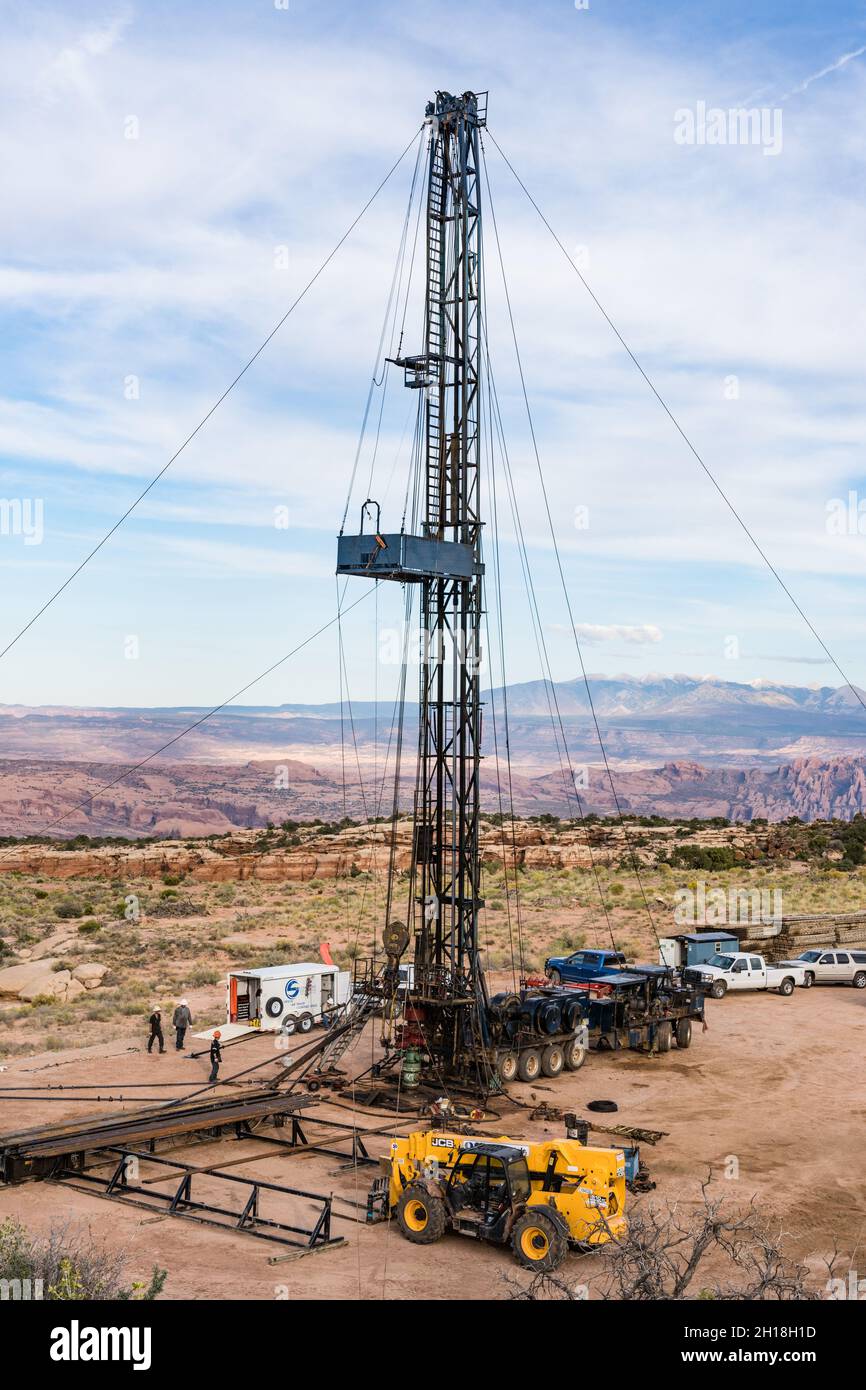
Snubbing units have evolved into one of the most capable and efficient well servicing tools in the oil & gas industry. In the 1920"s, the need for a rig to work with pressures at surface drove the invention of the snubbing unit. The first snubbing unit was primarily designed to work in well control situations to "snub" drill pipe and or casing into, or out of, a well bore when conventional well killing methods could not be used. The first snubbing unit relied on the draw works of the companion rig to supply its" power. A series of sheaves, cables and counter weights were rigged up so that as the rig"s traveling blocks hoisted up, the snubbing unit would snub in the hole. Conversely, when the traveling blocks on the rig were lowered, the snubbing unit would snub out of the hole. As you can imagine, this required close communication with several different contractors in order to perform the work safely and efficiently.
One of the main components of a snubbing unit is the slip. Stationary and travelling slips are operated in sequence to grip the pipe as it is snubbed into the well. Typically, a minimum of four slip bowls are used in snubbing operations. Two slip bowls are designated for "pipe light" operations. Pipe light is when the well bore forces are greater than the tubular weight in the well bore. The other two slip bowls are designated for "pipe heavy" operations. Pipe heavy occurs when either enough pipe has been snubbed into the well bore and fluid weight inside of the pipe is greater than the snub forces acting against the pipe in the well bore.
Modern snubbing units are powered by sophisticated hydraulic systems. These hydraulic units typically supply all power required by the components of a snubbing operation. With a better understanding of hydraulics and modern advances, companies have been able to harness this hydraulic energy to develop precision controlled snubbing units. These units move tubulars into and out of a well bore by use of a "multi cylinder jack"; a snubbing jack comes in many sizes depending on the task at hand. They are usually denoted in size by the snubbing unit description (i.e. 460K, 340K, 200K, etc). The 460K snubbing unit has the ability to lift 460,000 LBS and a snubbing capacity of 230,000 LBS. Most snubbing units can typically snub half of their lift rating. Assume you had a well with 10,000 PSI at surface and wished to snub in a string of 2 3/8" tubing. The snubbing contractor can calculate the snub force, add in their respective friction calculations and project the snub force to overcome will be approximately 51,000 LBS. This would put a 120K snubbing unit to close to its maximum capacity of 60,000 LBS snub loading. The safest bet would be a 150K or 235K snubbing unit.
Pipe handling is performed by the snubbing units "gin pole" and "pipe winches". The gin pole is typically telescoped out in excess of 40ft above the snubbing unit. With the use of dual tubing winches, multiple joints of pipe can be handled simultaneously, speeding up the operation.
The snubbing "basket" is the platform where the snubbing personnel work. The basket contains all of the necessary hydraulic controls to operate all the features of the snubbing unit, as well as a large bank of BOP"s and hydraulic valve controls.
Today"s snubbing units can be employed to provide a wide range of services. In essence, a snubbing unit is a hydraulic rig that can do everything a rig can do, plus it can perform under pressure in an under balanced live well state. This is especially critical to the operators in the Haynesville Shale, which is known for HPHT wells. With the use of the snubbing units" hydraulic rotary, the unit can be employed for fishing, milling, drilling, side tracking or any task needed to remove bridge plugs, cement or deepen wells.
The industry has become more aware of damages caused by heavy kill weight fluids and mud. This has helped make snubbing units more popular in a completion and workover role, versus its" traditional use as a well control response tool. With the advances in drilling technologies in the unconventional shale market, the benefits of snubbing units have become very apparent. These types of completions often have laterals extending out thousands of feet. With costly stimulations used to help extract the gas more efficiently, operators often times do not wish to turn around and load the well with heavy fluids to complete the well dead.
Coiled tubing has its limitations in reach, due to wall to wall mechanical friction in horizontal wells. Often times the coiled tubing units cannot reach TD or supply the needed weight on bit to mill up composite plugs typically used in completions.
Another clear advantage to using a snubbing unit is its" small footprint, which is critical on the tight locations in the unconventional shale"s. Moreover, the small size and ease of mobilizing is especially useful and cost effective with offshore wells.
In conclusion, with the snubbing unit"s size, ability to handle pressure, rotary capabilities, rigidity of jointed tubing and minimal wall contact, snubbing units have become the chosen resource for these types of completions.
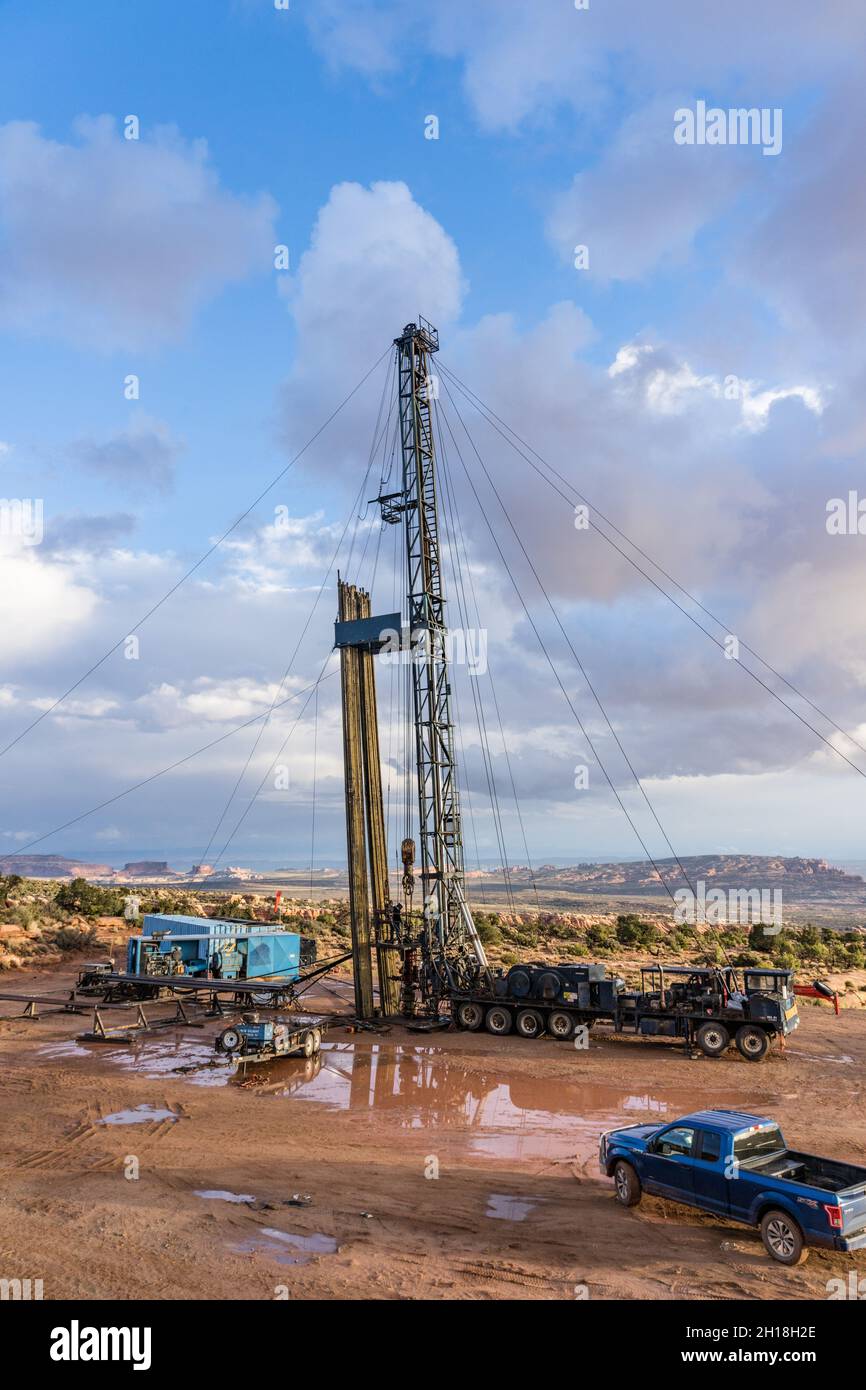
We like to throw around “blog ideas” over here at Croft to help my fellow blog partner, Amy and I have a new fresh blog every week. We try to keep our readers up to date with both the new and the old. Someone threw out the idea of writing about a workover rig. Still being new to the industry, I snatched this topic up because I simply wanted to learn more about it myself! My main focus for this blog is simply discussing what is a workover rig and why it is important.
First off, maybe you know a workover rig by a different name. They can be called completion wells or pulling units. I just want to try to avoid any confusion! I am going to give Wikipedia’s definition first and then break it down to layman’s terms for those of you who don’t quite understand what the Wiki is trying to say (Like me). According to Wikipedia, “The term workover is used to refer to any kind of oil well intervention involving invasive techniques, such as wireline, coiled tubing or snubbing. More specifically though, it will refer to the expensive process of pulling and replacing a completion.” Let’s break down some of that Terminology…
Snubbing: This method is used in more demanding situations when wireline and coiled tubing does not offer the strength and durability needed. Snubbing runs the bottom hole assembly on a pipe string using a hydraulic workover rig.
So basically, the purpose of a workover rig is to replace a well with a fresh completion. This may have to happen due to the well deteriorating or the changing of reservoir conditions. This is performed if a well completion is unsuitable for the job at hand. An example of the well deteriorating is the equipment may have become damaged or corroded such as production tubing, safety valves, electrical pumps, etc. An example of the changing of reservoir conditions maybe if the flow of a well has decreased over time. If this happens, when the well was originally drilled, it was fit for tubing that was big enough for a higher flow of oil and gas. As the flow decreased, smaller tubing is now needed.
For a workover to take place, a well must be killed or in other words, stop the flow of oil or gas. This is an intense procedure for a workover to take place, so they are planned long in advance.
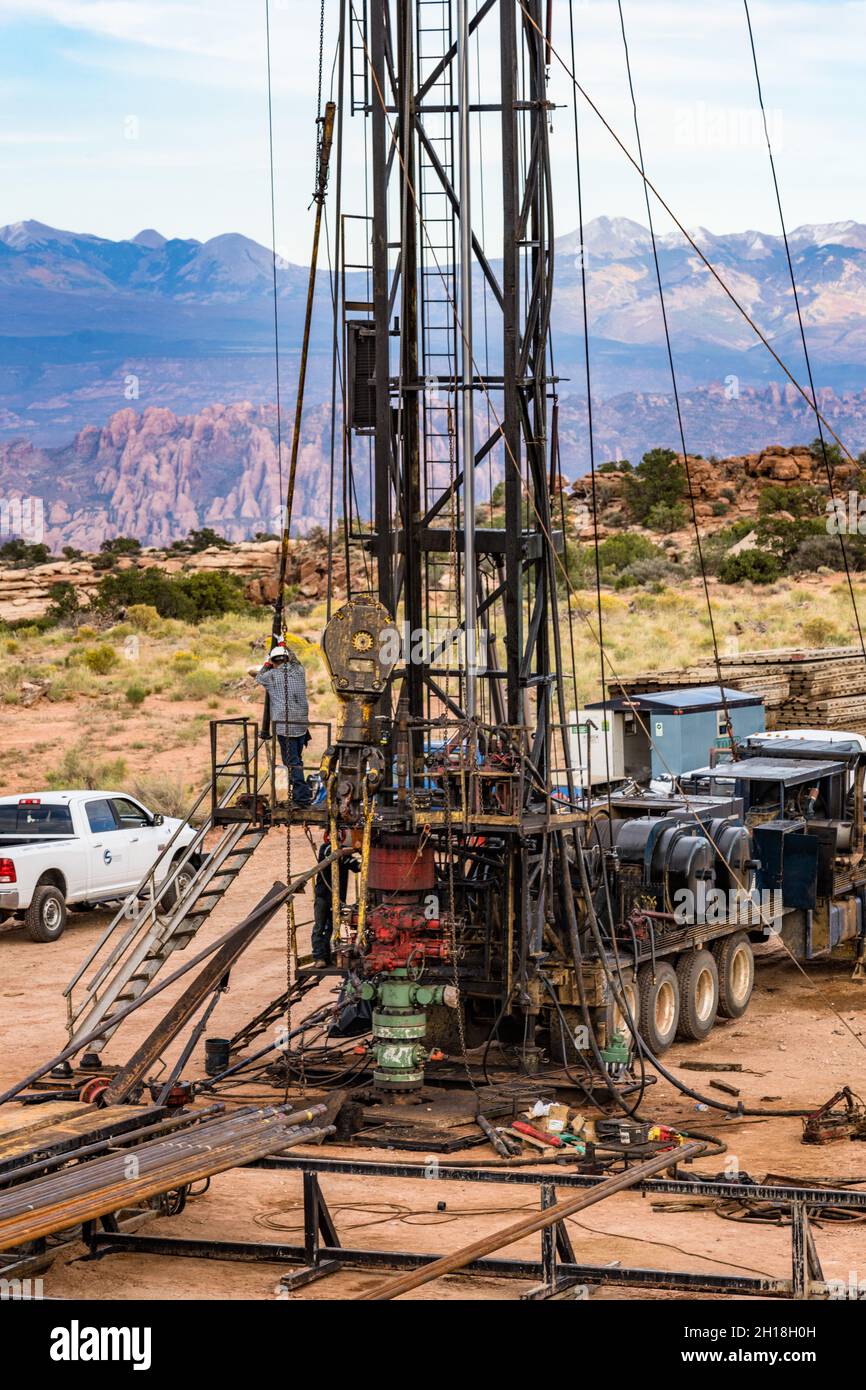
While hydraulic workover (HWO)/snubbing will never wholly replace traditional workover rigs, particularly in dead well applications requiring multiple trips and fishing jobs, in live and pressured well re-entries the technology offers myriad operational; economic; and health, safety, and environment advantages. From its inception solely as a mechanism for handing tubulars during well control operations, hydraulic snubbing technology has evolved into a mechanism that can perform any operation once considered the sole jurisdiction of conventional drilling and workover rigs.
The ability of modular HWO/snubbing units to pull existing completions, drill open holes, and re-complete a well bore at flowing (near-balanced or underbalanced) conditions has effectively bridged the technological gap between derrick equipment configurations and coiled tubing (CT) units. Consequently, standalone or rig-assisted HWO/snubbing units have been employed successfully in a variety of activities worldwide, from re-completions and completions under pressure to tubing-conveyed perforating to the drilling of sidetracks, slim holes, and well deepening operations, among others.
Together with its capacity to rotate pipe in live well conditions and perform intervention operations without having to shut in production entirely, HWO/snubbing units can often be mobilized and de-mobilized in a fraction of the time and associated costs of a conventional workover rig.
Key to the comparably faster and more cost-effective mobilization and de-mobilization is the modular design that allows HWO/snubbing units with up to 600,000 lb hook load and rotary torque in excess of 14,000 ft/lb to be transported easily by air, sea, or over land. Accordingly, the modular design, in tandem with a comparatively minimal footprint as small as 2,500 sq ft (753 sq m), makes the technology an ideal contender for applications on remote offshore platforms.
Depending on the wellhead equipment, one of the foremost drivers for the growing use of HWO/snubbing units is a design engineered specifically to operate under pressures as high as 20,000 psi. Consequently, operators can perform a variety of well intervention operations without having to first kill the well and discontinue production completely.
Compounding the costs associated with lost production is the expense of killing the well and re-initiating production once the re-entry operation is completed. By way of illustration, installing a completion string after a typical fracturing job requires that the operator first employ high-density fluid to kill the well. In addition to the costs of the brine and kill pump are the rig-related expenses associated with running the pipe in the well bore. Afterwards, a CT unit and nitrogen may have to be used to re-start production, magnifying the costs even further.
By comparison, an HWO/snubbing unit normally can perform the same operation in one to two days with production continuing while the operation is under way. All things considered and depending on the specific application, employing an HWO/snubbing unit generally is more cost-effective on new and producing wells than a conventional workover rig and is less than that of the daily rate for a CT unit.
Moreover, with HWO/snubbing technology, the operator avoids the costs and potential environmental liabilities associated with the onshore/offshore disposal of heavy-weight kill fluid. Also from an environmental perspective, since less equipment is required on location, operators do not have to flow the well to atmosphere to maintain pressure control, thus further reducing the carbon footprint. Since the units do not require any water from nearby streams or underground aquifers, hydraulic snubbing is especially beneficial in areas where water is a premium or scarce resource.
Contemporary hydraulic snubbing technology bears little resemblance to the units introduced in 1929, only 10 years after the development of well cementing. Those first units comprised little more than a series of cables, sheaves, and counterweights and were used strictly for well control operations and snubbing in live completions.
At their conception, snubbing units relied on a rig’s drawworks to hoist pipe in and out of the hole, and the sheaves were rigged up so that as the traveling blocks hoisted upward, the pipe would be snubbed into the well. Conversely, lowering the traveling blocks brought the pipe out of the hole.
Over the years, increased understanding of hydraulics resulted in the development of the “concentric” snubbing unit, which consisted of a hollow hydraulic cylinder. This design also created the first pipe guide that prevented the buckling that plagued earlier units and allowed operators to work on higher-pressure wells with longer strokes, which reduced the time required to complete the job.
Soon afterwards, the first multicylinder snubbing unit was developed, which was a prototype of the system used today. The industry also developed specialized slips and blowout preventers (BOPs) configured for the purpose of snubbing/stripping. As the unit designs progressed, they incorporated stronger gin poles and hydraulic rotary tables. Today, a standard HWO unit can be transformed into an HWO/snubbing unit in an hour with the simple addition of two sets of slips and a tubing guide.
The steady progression of hydraulic snubbing coincided with drilling advancements that have led to the widespread construction of ultraextended-reach drilling, multilaterals, and other unconventional wells that all too often are outside the capability of conventional service tools and technologies. In unconventional plays and well configurations, the advantages of HWO/snubbing to more conventional CT units, for example, are evident. Unlike CT, the ability to rotate the pipe and work string dramatically reduces wall-to-wall frictional drag. In turn, minimizing friction increases depth capability significantly, crucial in laterals that extend past 3,000 ft (915 m).
Elsewhere, in an oil producer offshore Dubai, the technology was used in a live re-completion encompassing tubing-conveyed perforating (TCP) guns and acid stimulation at a well depth of 9,500 ft (2,898 m). After pulling the completion, the operator was able to run a cast-iron bridge plug and TCP guns before perforating. After successfully performing the acid stimulation, the hydraulic snubbing unit was used to run the re-completion assembly. From rigup to rigdown, the operation required 15 twelve-hour days.
The technology also was applied in a dry and pressurized re-completion of an onshore 16,000-ft (4,880-m) deep gas well in Sharjah. After the tree was frozen and removed, the BOP stack was installed and the 5-in. production string pulled from the hole. Afterwards, a tapered 27?8-in. to 31?2-in. production string was run in the hole to 8,500 ft (2,593 m), at which time a retrievable bridge plug was used to isolate the reservoir from surface to change out the hanger spool. The remaining completion installation was completed with 31?2-in. production tubing. The entire operation, including rigup and rigdown, was completed in 11 days.
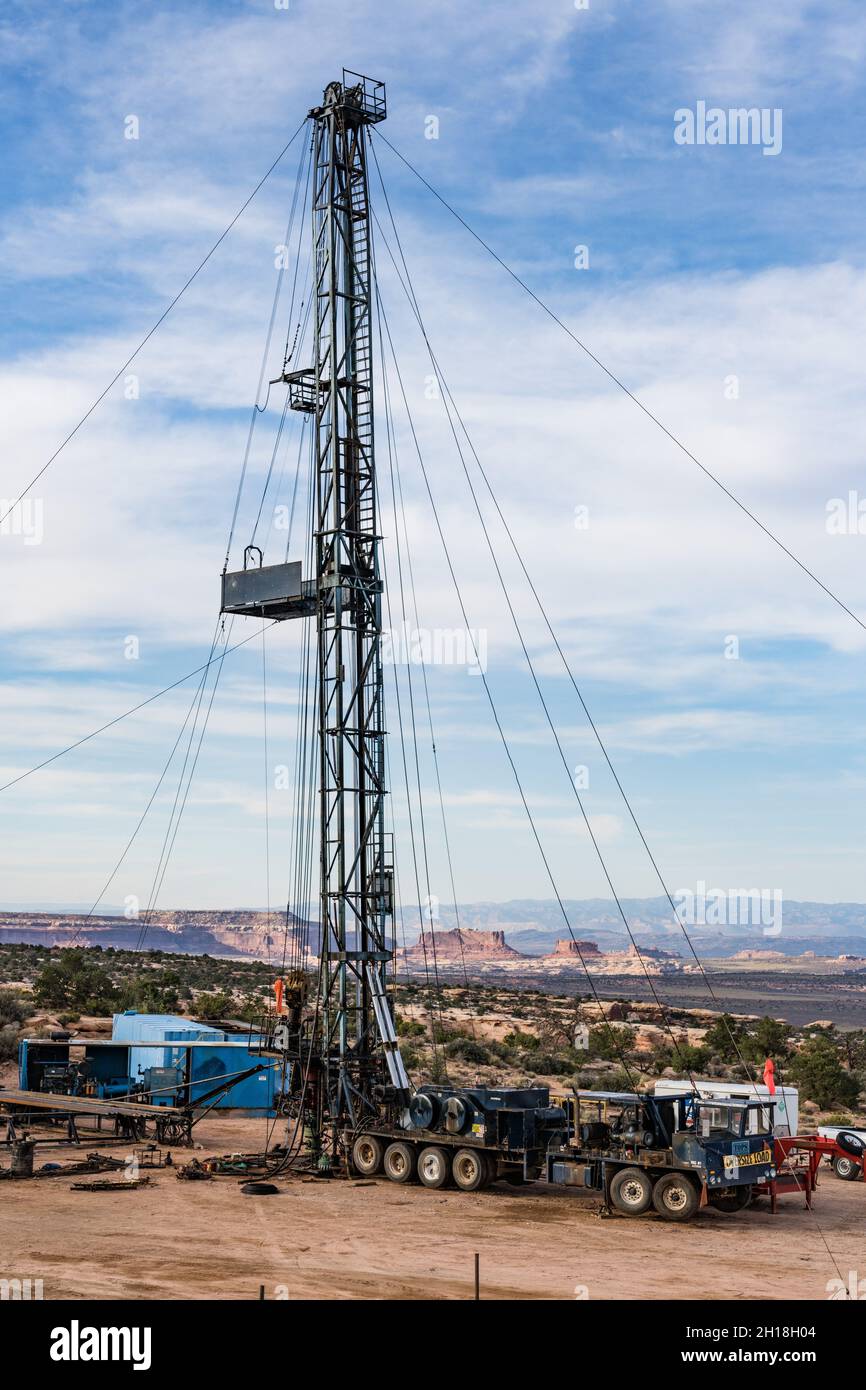
The use of a Snubbing Unit is not only already providing cost effective technology for a wide range of Drilling and Well Servicing applications but also has the potential for providing an alternative way to optimally develop future fields.
Present Snubbing and Hydraulic Workover applications include the undertaking of remedial well work without resorting to the use of kill fluids or lost circulation material and the performing of conventional tubing replacement workovers Snubbing well intervention operations are also now routine where coiled tubing operations are not feasible due to well bore geometry or length and should be considered where platform facilities are unable to handle the weights of larger coiled tubing reels.
Historically, workovers performed through existing tubing ("through-tubing workovers") have been undertaken with wireline or coiled tubing equipment, often supported by the use of a derrick equipment set. Snubbing systems are now performing similar work and are proving to be far more versatile than wireline coiled tubing and conventional workover rigs with the additional ability of being able to run and rotate tubulars while there is pressure on the well. Although certain workover situations will still call for wireline coiled tubing or workover rigs, there are now many situations where a Snubbing Unit is the logical choice. In principle, all of the downhole work that can be carried out by standard rig or through-tubing workover equipment can also be completed by Snubbing Units, with the (current) exception of running large >10 3/4") tubulars.
Future applications for the technology include the horizontal side-tracking of existing wells (which could be performed conventionally or underbalanced). Such operations can either be undertaken through the existing tubing or, where such operations are not deemed feasible, the Snubbing Unit can be used to pull the existing completion prior to the side-track and used for the subsequent running of the liner and completion after drilling.
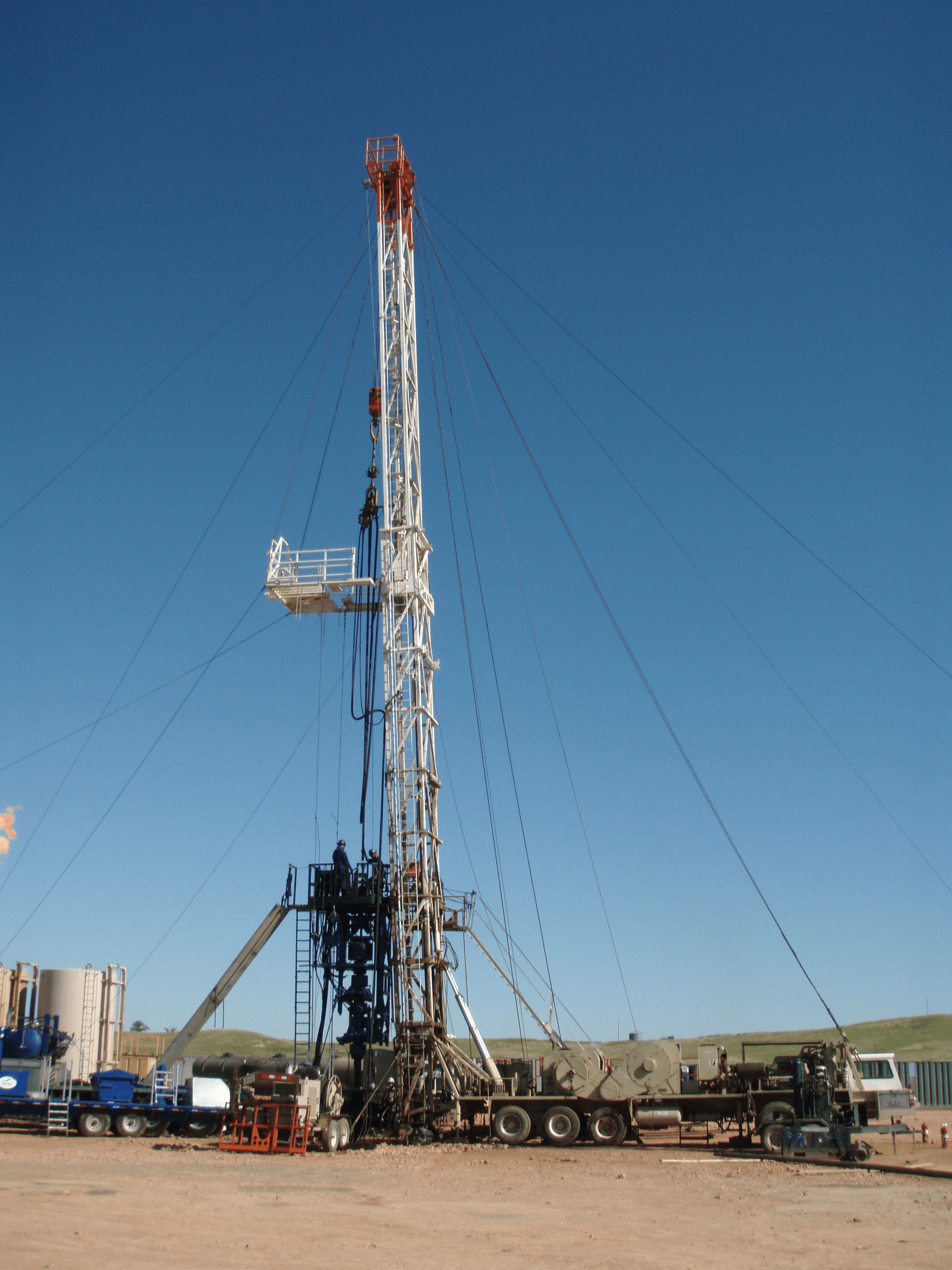
Workover rigs, also called pulling unit rigs, are specialized oil rigs set up for inserting or pulling pipe tubing in and out of wells. Workover crews are called when an oil well has been drilled, is undergoing repair or is being retired, as indicated by Schlumberger.
These crews are relatively small compared to other rig crews and consist of tool pushers, operators or relief operators, derrick men and floormen or roughnecks. The average workover rig salary overall was $65,039 as reported by Simply Hired in 2022. Available workover rig jobs and descriptions can be found on the Rigzone website.
The acting supervisor on a workover rig is called the tool pusher. The main task of a pusher is to hire, fire and supervise contracting work crews. When contractors have an issue on site, the first person they report concerns to is the tool pusher. Pushers need to have an intimate knowledge of how each and every part of a rig works, both individually and as an overall part of the drilling operation as a whole.
If equipment fails or needs to be reordered, the tool pusher talks with suppliers to get the right parts out on site with a minimum of downtime for the rig. The pusher is responsible for the overall safety of a rig. If the tool pusher has any safety concerns, he has the power to halt production until the concern is resolved.
The operator/relief operator is next in order of responsibility to the tool pusher on a workover rig. The main task of an operator is to control the crane and derrick that hauls pipe in and out of the bored well. In smaller crews, the operator is also the one who drives the rig truck. When laying pipe into a well, the operator directs the truck or derrick to the optimum spot next to the bore opening.
The operator then instructs the derrick hands and roughnecks where to place the bore pipe for easy access by the crane or by hand-loading methods. During a well breakdown or repair, the operator directs the crew hands in storage of extracted pipelines. Because the operators work most closely with derrick hands and roughnecks, they are typically responsible for selection and maintenance of their immediate workover rig crew.
In the pulling unit rig crew hierarchy, the derrick hands come after the operator/relief operators. The main responsibility of a derrick hand is everything that is above ground on the rig. During laying operations, derrick hands assist the operators/relief operators in inserting boring into the well. During repair or breakdown, they assist the operator in pulling pipe out of the well and storing it properly.
In between laying, derrick hands have other responsibilities as well, depending on the size of the crews. In smaller crews, Derrick hands also see to the maintenance of the rig-based electric and diesel generators necessary to power rig equipment.
At the bottom of the pulling unit rig crew in terms of seniority is the floorhand or roughneck. The main task of a roughneck is to perform any kind of tasks asked by either the derrick hand or the operator. These tasks can range from assisting with laying new pipe or removal of old tubing, general construction, to moving new equipment, such as generators. Most crew members on a work-about start their career as a floorhand or roughneck before working their way up to more senior positions.
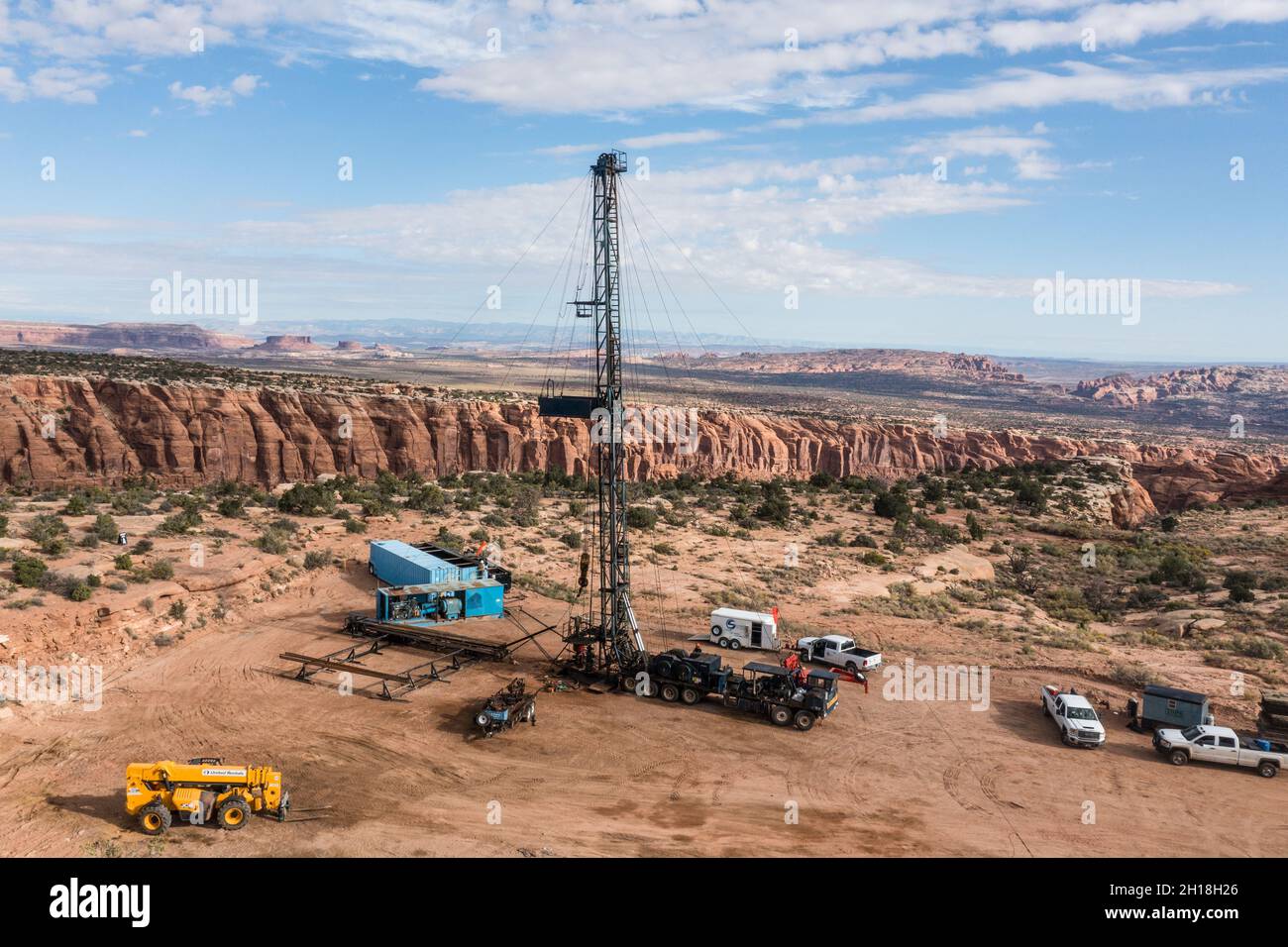
This website is using a security service to protect itself from online attacks. The action you just performed triggered the security solution. There are several actions that could trigger this block including submitting a certain word or phrase, a SQL command or malformed data.
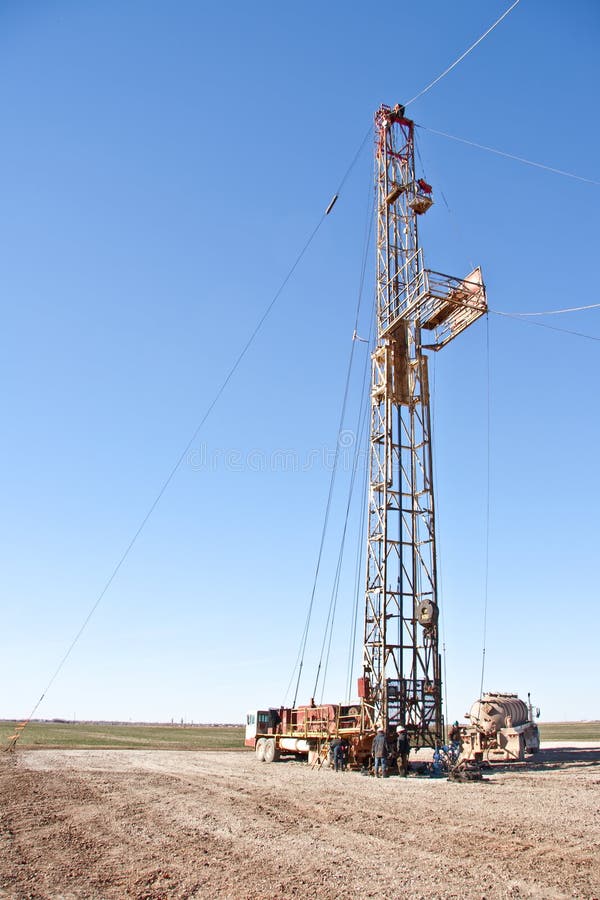
In oil and gas recovery operations, tubular members are usually run or pulled using a workover rig or a snubbing unit. Workover rigs are basically small drilling rigs having a derrick and drawworks, and although they are less expensive to employ than full-sized rigs, their use can still be quite costly.
Snubbing units are smaller, easier to transport and less expensive to operate than workover rigs and are often employed when working a pressurized well that requires tubular members to be forced into the wellbore.
A viable alternative that improves safety and efficiency during snubbing operations consists of a power tong set, with lead and back-up tongs that are mounted on the slip bowl of the traveling jack head of a snubbing unit and rotates with the slip bowl. Service lines for the tong set are not connected during string rotation.
In another version of this type of device, a fluid feed-through swivel is mounted on the tong set, secured to the necessary tong operating and control service fluid lines, such that the tong set can rotate with tong service lines between the tong set and the snubbing unit attached during rotation.
Snubbing is an old technique dating back to the late 1920s in the United States that was primarily used in emergency situations, such as blowouts or uncontrolled wells.
The snubbing unit therefore offers better flow capacity, breaking load and rotation capacity and is able to put weight on the downhole tool. In contrast, tripping takes longer because the lengths of pipe have to be screwed together and the procedure for running the connections through the safety stack on the wellhead may be slow and represents a high risk for personnel if not done properly.
A snubbing unit consists basically of a pipe-handling system, a wellhead safety system, a hydraulic power unit and the downhole accessories incorporated into the snubbing string.
With the traveling slips closed and the stationary ones open, the pipe can be tripped over a length corresponding to the stroke of the jacks. Then, all that is required to bring the jack back to its original position is to close the stationary slips and open the traveling slips. After the traveling slips have been closed again and the stationary slips have been opened, the operation can continue.
No tong pole and no pushing or pulling of the tong on and off the pipe is necessary, which eliminates nagging injuries (broken or mashed fingers, twisted or strained backs, shoulder damage) and significantly improves the efficiency of the operation.
The jack head tong carries the provision of having a three-section cage plate system that can be removed to allow the jack head tong to be open for full wellbore capabilities, matching the BOP’s bore. This is the fastest and safest way to trip pipe with a snubbing unit.
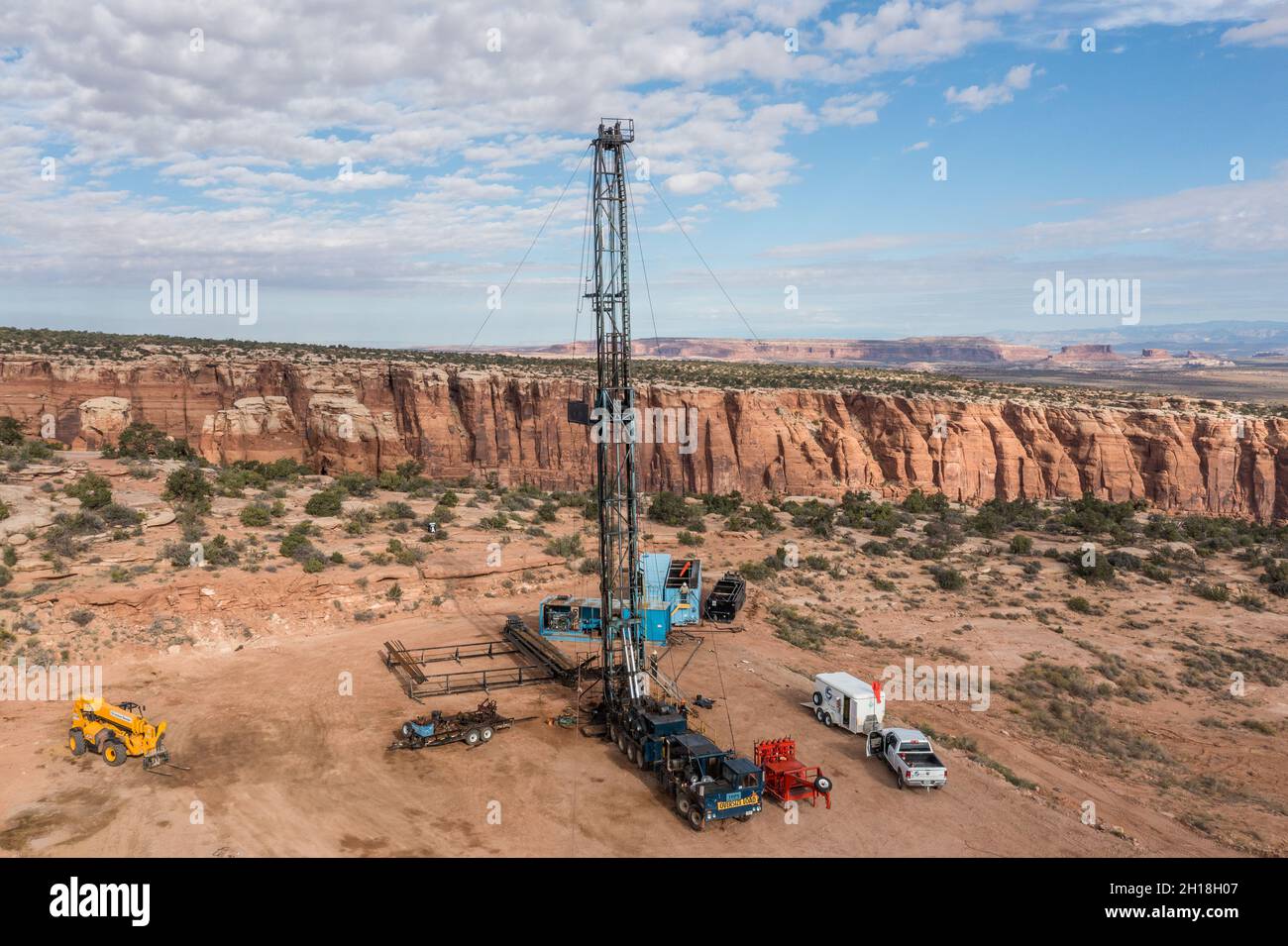
RMC1JWE0–Cuadrilla Resources drilling equipment & workover derrick rig at Shale Gas well Drill Site, Presse Hall Farm, Singleton, Blackpool, Lancashire, UK

Seller refurbished: The item has been restored to working order by the eBay seller or a third party. This means the item was inspected, cleaned, and repaired to full working order and is in excellent condition. This item may or may not be in original packaging. See seller’s listing for full details.See all condition definitionsopens in a new window or tab

Well servicing rigs, also known as workover rigs or pulling units, are used in well completion, well maintenance and well abandonment operations. The well servicing and coiled tubing market rises and falls based primarily in conjunction with the number and type of new wells completed. Increased oil demand, rising oil prices and improved operator cash flow are expected to drive higher upstream investment going forward and lift the $5 billion well servicing and coiled tubing services markets in 2021 and beyond.
The coiled tubing services market includes the supply of coiled tubing services to drilling, completion, and production operations. The coiled tubing (CT) services market is now primarily driven by the use of CT units in place of well servicing units when completing horizontal wells. While production services, or well intervention, were the original application of coiled tubing, completion-related services now drive this market because continuous tubing can be tripped into a well more quickly than conventional tubing handled by a well servicing unit. However, with new horizontal laterals now regularly exceeding 10000’ in the US, coiled tubing runs into a mechanical limit. This is driving oil companies to large, high spec well servicing rigs for new well completions.
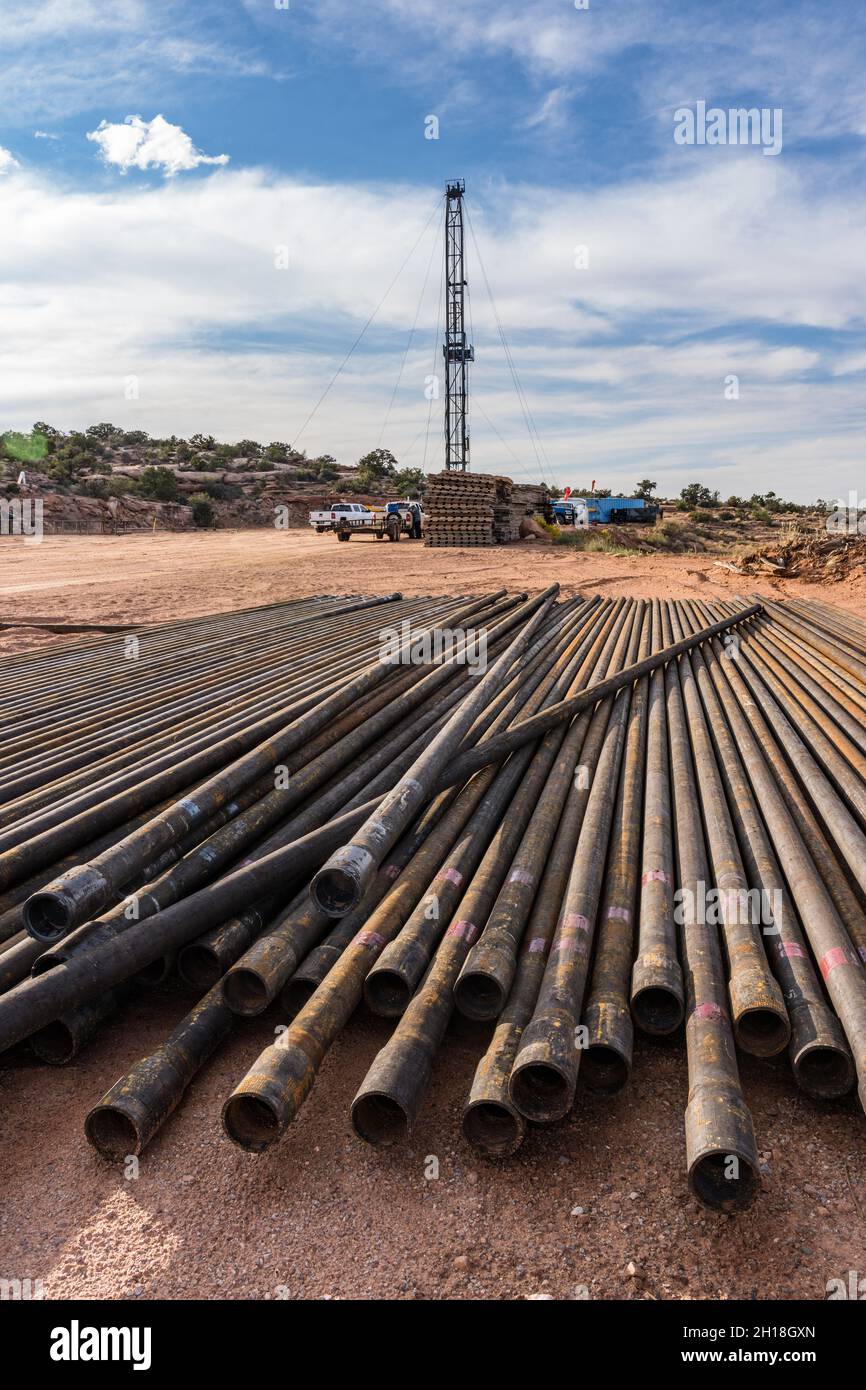
This website is using a security service to protect itself from online attacks. The action you just performed triggered the security solution. There are several actions that could trigger this block including submitting a certain word or phrase, a SQL command or malformed data.

This website is using a security service to protect itself from online attacks. The action you just performed triggered the security solution. There are several actions that could trigger this block including submitting a certain word or phrase, a SQL command or malformed data.




 8613371530291
8613371530291